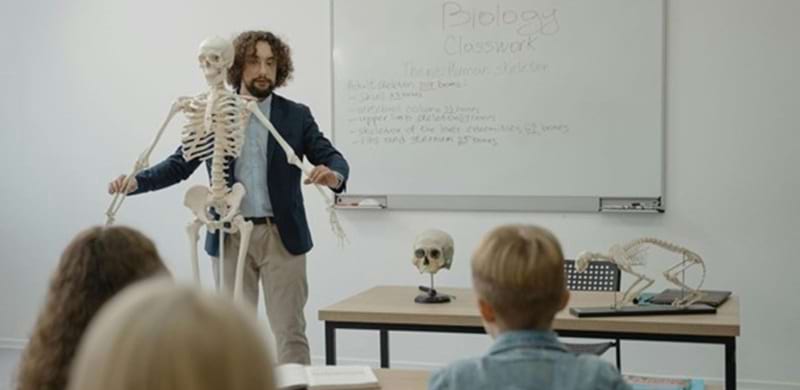Breaking Down Behaviorism: The Basic Principals Behind Behavioral Learning

A prominent behaviorist once said, “Give me a dozen healthy infants, well-formed, and my own specified world to bring them up in, and I’ll guarantee to take anyone at random and train him to become any type of specialist I might select—doctor, lawyer, artist, merchant-chief and, yes, even beggar-man and thief, regardless of his talents, penchants, tendencies, abilities, vocations, and race of his ancestors.” This man was John B. Watson, and the view sums up the behavioral approach to learning. In the classical behaviorist’s view, we are born a blank slate, ready to be trained and conditioned with useful skills.
Behaviorism itself is a branch of psychology in its own right and a massive field to explore. Whether you are a graduate looking to upskill with courses like an online masters counseling psychology, a parent looking to apply some tried and tested learning methods, or just curious about how we learn, behavioral principles are a good place to start.
B. F. Skinner
Have you ever heard of reinforcement? Conditioning? Punishment? Anyone who has raised kids should have an idea of how this applies to learning. Skinner pioneered a form of behaviorism called operant conditioning, which looked at how our behaviors are developed or conditioned through reinforcements.
An example of operant conditioning is sticker charts; say you want a child to brush their teeth or make the bed (desired behavior). A parent could provide positive reinforcement, i.e., when the child performs the desired behavior, they get a sticker on the chart. This reinforcement of the desired behavior by rewarding it will make the behavior more likely, and, over time, the child will learn to complete the desired behavior without the need for a reward.
When Skinner looked at development or learning, he categorized two types of behavior:
- Respondent behaviors–things that happen automatically, like pulling your hand away from a hot stove,
- Operant behaviors–things that require our conscious control.
Skinner looked at the ways we can manipulate the latter. He argued that students learn naturally in their environments, but teachers can arrange special contingencies or conditions to hasten the appearance of behavior or ensure the occurrence of behavior that might otherwise never occur. His approach to learning revolves around the idea that our behaviors are shaped by the consequences they produce and this process of learning from consequences, whether they are good or bad.
John B. Watson
‘The father of behaviorism’ had a slightly different view to Skinner and, unfortunately, went down in history for many of the wrong reasons. Watson saw himself as a scientist first and disagreed with Skinner’s interest in recording mental states, wanting psychology to directly study behavior because it was entirely observable and did not require the patient to report their feelings because these are simply the result of behaviors. As you can tell from the first quote, Watson thought that all behavior is teachable.
One of John B. Watson ’s most famous or perhaps infamous experiments was called ‘Little Albert’ after its test subject, a nine-month-old child who was described as ‘incredibly fearless,’ scared only by loud noises. Watson and his assistant, Rosalie Rayner, decided to carry out an experiment on little Albert. They wanted to induce a phobia–specifically, a fear of white rats. If you are a member of any modern ethics committee, alarm bells are probably ringing. However, at the time, the rules were a lot less stringent.
To test the principles of classical conditioning, they decided to condition little Albert to fear white mice as well as generalize the fear to include all small white animals. As a control, little Albert was shown images of small animals for two months before the conditioning began. In each session thereafter, Albert was presented with a white rat while, at the same time, a metal bar was struck with a hammer in a loud, startling way. After seven pairings of the rat and noise (in two sessions, one week apart), Albert reacted with crying and avoidance when the rat was presented without the loud noise. Albert had learned fear.
Modern approaches
The principles of both classical and operant conditioning are very much in use today. The main difference is that the nature vs nurture debate has been settled. What is the result? It is almost always a mix of both. There are some predetermined genetic factors that play a role in how we learn, such as our personality and intelligence.
The idea of manipulating environmental stimuli holds true and has a great effect on learning, as do consequences–good or bad that reinforce what we are trying to engrain. These methods foster motivation and adaptability, which are essential skills in our rapidly changing world.
Behavioral learning theories guide educational strategies and change our learning environments to maximize efficient learning. They help in understanding and shaping behavior, which is especially critical in collaborative settings. They offer assistance in designing personalized learning experiences that cater to individual needs and preferences. Overall, behavioral principles hold immense value and appropriateness in contemporary education, preparing learners for future challenges.






